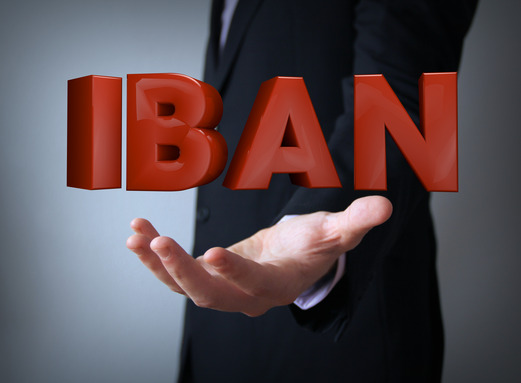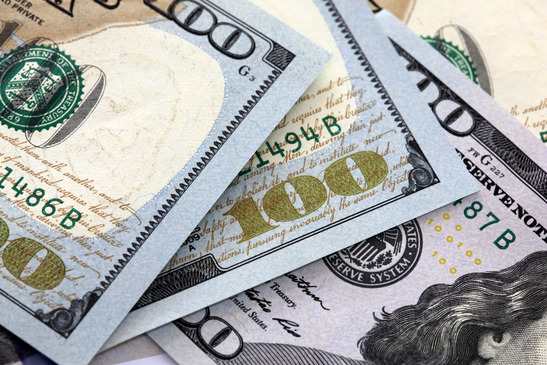 Need to send money to loved ones abroad? It’s so common in our interconnected global world these days. Perhaps for special expenses or to give a helping hand. Whatever the reason, you’ll need to find the best way to get the money to them. That means a service that is easy, reliable and offers low rates and fees. Specialist money transfer companies such as Ceylon Exchange are set up specifically to provide services for overseas transfer for individuals and businesses. Compared to using a bank, specialist services will generally have lower transfer fees and more favorable exchange rates.
Need to send money to loved ones abroad? It’s so common in our interconnected global world these days. Perhaps for special expenses or to give a helping hand. Whatever the reason, you’ll need to find the best way to get the money to them. That means a service that is easy, reliable and offers low rates and fees. Specialist money transfer companies such as Ceylon Exchange are set up specifically to provide services for overseas transfer for individuals and businesses. Compared to using a bank, specialist services will generally have lower transfer fees and more favorable exchange rates.
To send money to your loved ones, the process is as follows:
1. Locate your transfer service of choice
2. Register your account
3. Get a quote for exchange rates and applicable fees
4. Provide the details of the recipient
5. Enter and confirm the details of the transaction – check all rates and fees
6. Pay and initiate the transfer
7. Finally, track and confirm your transfer.
While you can’t avoid fees, a more important factor is the exchange rate which varies from day to day. Keep an eye on it and you may be able to save when transferring your money – and that means more will reach your loved ones overseas.
Paying for professional services by international money transfer

If some of the services your business uses are located overseas, and the time comes to pay the bills, you’ll need to find the best rates and most convenient service to settle your professional services invoices.
Some of the most frequently used overseas services for business may include:
- Accountant
- Financial planner
- Graphic designers
- Investment manager
- IT consultant
- Lawyer
- Management consultant
- Web designer
This is not a complete list, but whatever the services you are using, keeping costs down can have a big impact on your bottom line. So what do you need to consider in making your overseas payments?
Exchange Rates
First, remember that exchange rates fluctuate from day to day – volatility is a fact of life. This can be mitigated by making regular payments to average out the fluctuations, or making your payment on a day with a particularly favorable rate. However, although you can’t control the overall situation in the currency market, you can choose a transfer service provide who provides competitive rates.
Fees
Most services will charge a fixed fee, but although some will seem to be low or even fee-free, you should always take into account the exchange rate that they offer. The low or zero fee providers will generally make their profits from less favorable rates, so you’ll need to take into account your particular needs and the size of the transfer when calculating overall costs.
Banks vs Specialist Providers
Banks have long held the market for business transactions, but a lot of the time, they offer a poor deal in terms of overall costs. Generally their exchange rates are significantly less favorable than that offered by specialised transfer providers. This could add up to a game-changing difference for your business, especially if you make regular payments to overseas professional services.
Specialist providers usually offer an online facility, and some such as Ceylon Exchange have both online and physical presence. Compare rates and value today, and make the best choice for your business!
All about IBAN and SWIFT/BIC
 Have you ever come across IBAN and SWIFT/BIC while transferring funds internationally but aren’t too sure what they are or what they mean? This post will provide you with a clearer understanding of the IBAN and SWIFT/BIC by giving brief descriptions, breaking up each part and methods of checking whether the IBAN or SWIFT/BIC is valid for international transfer use.
Have you ever come across IBAN and SWIFT/BIC while transferring funds internationally but aren’t too sure what they are or what they mean? This post will provide you with a clearer understanding of the IBAN and SWIFT/BIC by giving brief descriptions, breaking up each part and methods of checking whether the IBAN or SWIFT/BIC is valid for international transfer use.
IBAN
IBAN, short for International Bank Account Number, is a globally recognized account number which is used for international bank account settlements. It is given in the name it is an International Account Number which banks use to transfer between accounts. It is important to note that not all countries use IBAN numbers. Below is a brief list of common countries which use IBAN for international funds transfers:
- European Union (All Countries)
- United Kingdom
- Saudi Arabia
- Jordan
- United Arab Emirates
For the complete list: https://en.wikipedia.org/wiki/International_Bank_Account_Number
What is the IBAN made up of?
An example of an IBAN is
GB82 WEST 1234 5698 7654 32
With an IBAN, the first two letters is the ISO code of the receiving country. In the example above GB stands for Great Britain.
You can determine the country ISO Code by accessing the following link: https://en.wikipedia.org/wiki/ISO_3166-1
Usually, the last few numbers of the IBAN is the domestic account number. In this case, the last 8 bold letters is the domestic account number. The numbers in between the ISO code and the domestic account number differ from country to country. Please see below for a explanation as to what the numbers between mean from country to country: https://en.wikipedia.org/wiki/International_Bank_Account_Number
How do we validate the IBAN? You can use the below link to verify the IBAN. For some countries, such as the EU, it will also give you the SWIFT Code and Bank Name: http://www.ibancalculator.com/iban_validieren.html
SWIFT/BIC Code
SWIFT code is a standard format of Bank Identifier Codes (BIC) and it is a unique identification code for a particular bank. You can think of it as an international BSB number. Each bank in the SWIFT system internationally has a SWIFT code which is usually used for transferring money internationally.
The SWIFT code consists of 8 or 11 characters. The code format is as below:
AAAA BB CC DDD
First 4 characters – bank code (only letters)
Next 2 characters – ISO 3166-1 alpha-2 country code (only letters)
Next 2 characters – location code (letters and digits) (passive participant will have “1” in the second character)
Last 3 characters – branch code, optional (‘XXX’ for primary office) (letters and digits)
For more information on SWIFT Codes, please visit the following link: http://www.theswiftcodes.com/
** This publication should not be considered as either general or personal advice and is only published for educational purposes. It is not tailored to any reader’s financial objectives, goals or needs. If you wish to make a financial investment which suits your financial objectives, kindly seek the advice of a licensed financial advisor. Kindly note information has been collected from sources considered to be reliable, but we do not guarantee their accuracy or completeness.
Currency to Accompany you to the Middle-East/Arabian Peninsula
 Are you travelling to the Middle-East/Arab Peninsula but not too sure which currency you should be taking with you?
Are you travelling to the Middle-East/Arab Peninsula but not too sure which currency you should be taking with you?
While travelling it is ideal to carry specific currencies in certain regions within the world. The reason being is to hedge against severe market fluctuations, capitalise on exchange rates on offer and remove the hassle finding the right exchange house to convert your money while trying to enjoy your trip.
This blog will provide you with a general idea on which currencies you should accompany you while travelling to the Middle-East/Arabian Peninsula. So, if you are planning a trip soon or would like to know for educational purposes this is the article for you!
The Middle-East and Arabian Peninsula are popular destinations with millions of travellers entering and leaving the region of the world yearly for different purposes such as holidays, pilgrimage, business etc. We will outline a few reasons as to why it is ideal to carry USD while travelling to this region of the world.
- Universally Accepted Currency: The U.S Dollar is the most common currency used alongside the local currencies in this region of the world. You will find that most hotels, businesses or services will also accept USD for payment. Take Lebanon for example, you are able to use USD at restaurants and cafes to pay the bill or even while catching a cab! Just note that your change will most likely be in local currency. However, that shouldn’t be too much of an issue as we will see below in point 2.
- Fixed-Exchange Rate: A common characteristic of the exchange rates in this region of the world it that most of the countries utilize a fixed exchange rate system. These countries include but are not limited to the United Arab Emirates, Saudi Arabia, Lebanon, Jordan etc. This is important to know as it will help you hedge against market fluctuations that will negatively impact the value of your currency. A good example is in the case you travel with Australian Dollars to these regions but the Australian Dollar loses value and depreciated dramatically then you will have to exchange the funds at an exchange house at a lower rate.
- Exchange Rate on Return: Arrived back to Australia and have some foreign currency you’d like to sell? If you are carrying the local currency, then you’ll most likely receive less than what you would if it were US Dollars. Note that the U.S dollar is fixed and a universally accepted currency, hence you will find it easier to sell the U.S dollar and you will receive much more competitive rates. It is also important to note that not all of the local currencies are easy to sell upon your arrival to Australia. Take the Lebanese Pound for example, you will find it extremely difficult to sell it back to foreign exchange shops and you will find most places not willing to even purchase the currency!
So while travelling to the Middle East/Arabian Peninsula it is important to keep the previous points in mind. Just remember, the U.S dollar is a universally accepted currency, is fixed to the majority of the local currencies in the region mentioned and it is also much easier to exchange for better prices!
** This publication should not be considered as either general or personal advice and is only published for educational purposes. It is not tailored to any reader’s financial objectives, goals or needs. If you wish to make a financial investment which suits your financial objectives, kindly seek the advice of a licensed financial advisor. Kindly note information has been collected from sources considered to be reliable, but we do not guarantee their accuracy or completeness.
Understanding Currency Fluctuations
 Anyone who transfers their funds internationally, whether it is for family maintenance or paying off a business invoice, would notice the fluctuations in exchange rates from one point of sending to the next. As the value of the currency fluctuates relative to other currencies, there are numerous international and domestic variables which form a country’s currency value.
Anyone who transfers their funds internationally, whether it is for family maintenance or paying off a business invoice, would notice the fluctuations in exchange rates from one point of sending to the next. As the value of the currency fluctuates relative to other currencies, there are numerous international and domestic variables which form a country’s currency value.
Basically, the main determinant of the value of the domestic currency is determined by the supply and demand for the currency. This blog post will assist you with some information on exchange rate fluctuations by providing three factors which influence rate changes.
1. Inflation
What is inflation?
Inflation is the rate at which the general price of goods and services is rising and purchasing power of currency is falling.
An economy which is experiencing lower inflation rates generally means that their products and services are relatively competitive which attract international traders to purchase products within the country that creates demand for the currency and the value of the currency increases.
However, when an economy experiences a higher level of inflation, the purchasing power of a unit of currency falls. For example, if the inflation rate is 5%, then shoes which are worth $100 dollars now in a given year will be worth $105 dollars. You require more of the domestic currency to purchase the exact same product which means the value of your currency is worth less.
2. Interest Rates
A second variable which influences the unit of currency value is the Interest Rates. If the central bank of a given country decides to raise Interest Rates, this will attract international foreign investors due to the higher monetary returns which create demand for the currency and increases its value. If the central bank decides to decrease the interest rates, then the returns for foreign investors will decrease which will deter foreign investors from investing in the domestic economy where the demand for domestic currency falls so the value of the currency also decreases.
3. Speculation
A third and final variable which will be discussed is speculation. Hypothetically, if international investors have doubts and negative forecasts concerning Sri Lankan economic growth in the next quarter and they hold Sri Lankan Rupees, this will cause the investors to sell Sri Lankan rupees which will cause the demand for LKR to fall and the Supply to increase rapidly which will cause the value of the Sri Lankan Rupee to fall.
** This publication should not be considered as either general or personal advice and is only published for educational purposes. It is not tailored to any reader’s financial objectives, goals or needs. If you wish to make a financial investment which suits your financial objectives, kindly seek the advice of a licensed financial advisor. Kindly note information has been collected from sources considered to be reliable, but we do not guarantee their accuracy or completeness.